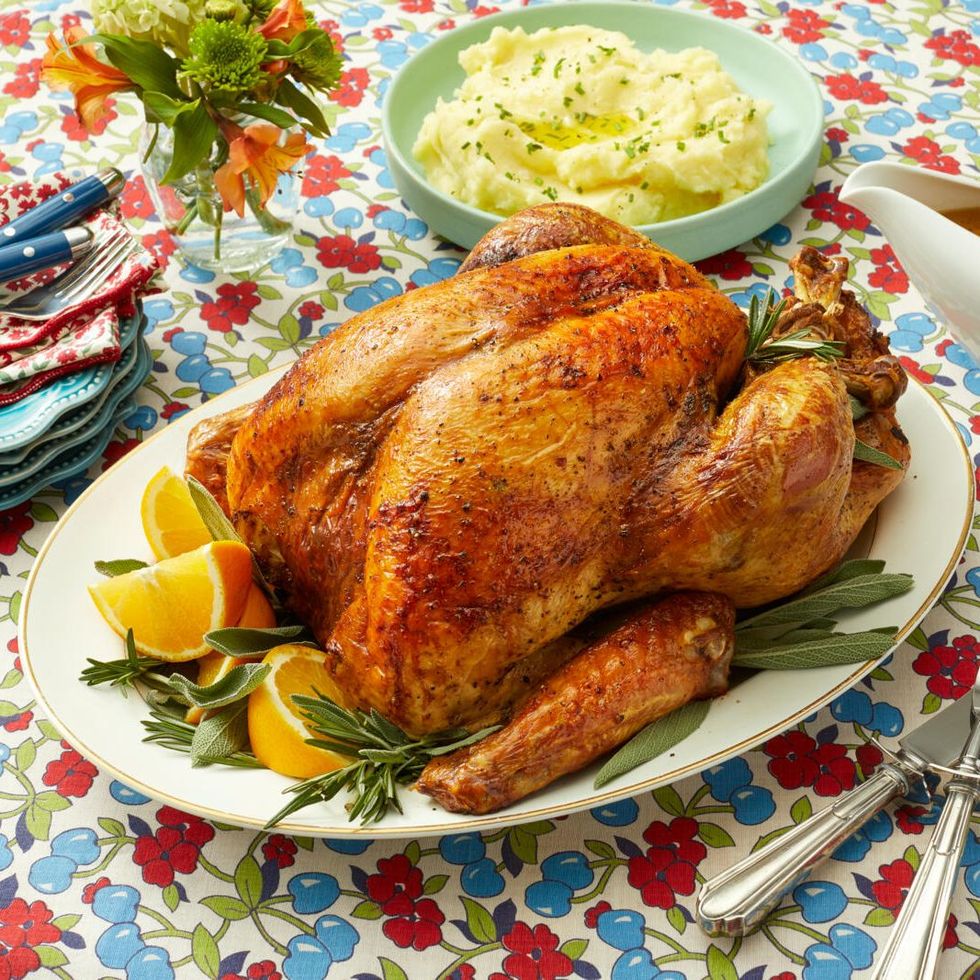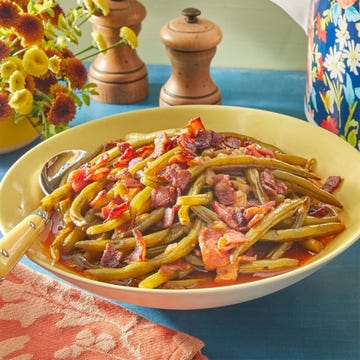It's undeniable that the turkey is the most important dish on the Thanksgiving menu. But before you ever brine or season a bird, much less roast or fry it, there's one question that absolutely must be answered: Should you clean a turkey before you cook it or not?
If your roasted turkey recipe calls for rinsing the bird, it might be time to find a new recipe! According to the United States Department of Agriculture (USDA), it's impossible to remove all the bacteria from a raw turkey by rinsing it, and trying to do so can splash and spread harmful bacteria all across your kitchen. There's only one time that you should ever rinse your bird. Read on to find out more, and the safest way to do it.
Should You Clean a Turkey Before Cooking It?
Well... you don't! Just like with other meat, the USDA recommends skipping washing your turkey before you cook it. It doesn't matter if you're roasting, frying, or smoking your turkey, there's no need to give it a rinse unless you've brined it (more on that below). Cooking the turkey kills any bacteria, but washing a turkey before you cook it opens the door to dangerous cross contamination. Instead, take your turkey straight from the package to the roaster.
When Should You Rinse a Turkey?
The only time you should ever rinse your bird is if you've brined it first. This is to remove some of the salt from the turkey. You'll want to do a little prep first, though, to minimize the spread of bacteria. "When rinsing brine off of a turkey, be sure to remove all other food or objects from the sink, layer the area with paper towels, and allow a slow stream of water to avoid splashing," according to the USDA recommendation. Be sure to rinse the outside and the inside cavity of the bird with cool water and hold the bird up to drain the water from the cavity before transferring it to a roasting pan. Then, toss the paper towels in the trashcan and thoroughly disinfect your sink and surrounding countertop. Finally wash your hands for at least 20 seconds with warm water and soap.
Do You Wash the Inside of a Turkey Before Cooking It?
Nope! Just like with the outside of a turkey, there's no need to rinse the cavity. All you need to worry about is removing the neck and giblets. Now, if you're working with a brined bird, you will need to rinse the inside. Ree Drummond likes to rinse the inside and outside of her turkey under a running faucet with cold water for several minutes. Then, she'll fill up a big pot with cold water, submerge the rinsed turkey, and allow the bird to soak for about 15 minutes. This flushes away some of the saltiness. It's best to soak the turkey in a pot rather than your sink to control the spread of germs.
What Happens if You Don't Clean a Turkey?
There's no harm in skipping cleaning your turkey. According to the USDA, it's impossible to wash all bacteria off the bird. In fact, cooking the turkey removes far more bacteria than rinsing ever could. By not cleaning your turkey, you'll cut down the risk of spreading harmful bacteria all around your kitchen, and you'll also save some much-needed time on Thanksgiving Day. Use that extra time baste your bird and locate that handy dandy meat thermometer to ensure the turkey is cooked to juicy, golden brown perfection. The USDA recommends roasting a bird until the thickest part of the turkey breast reaches 165 degrees.
How to Prep a Turkey for Roasting
Before you pop that bird in the oven, follow these steps for your best turkey yet.
- Make sure your turkey is fully thawed. Knowing how long it takes to thaw a turkey will save you on Thanksgiving Day. Hint: it takes days, not hours!
- Empty the cavity. Turkeys usually come stuffed with a sack of the neck, giblets, and other odds and ends. Make sure to remove this before brining or roasting your bird. You can save it to make your giblet gravy!
- Brine your bird. Ree Drummond is a huge fan of brining a turkey. Whether you use a wet brine or dry brine, this technique adds unmatched flavor and moisture to the bird! If you plan to brine, you'll need to factor in plenty of time to do so—usually a day or two.
- Stuff the cavity with aromatics. Adding halved citrus, garlic, or fresh herbs sprigs to the cavity of a turkey is great way to bring more flavor. As the bird roasts, those flavors perfume the meat.
- Truss the turkey. Cross the turkey's legs, then use kitchen twine to tie them together. Trussing helps with even cooking because the turkey becomes more compact. A trussed turkey also looks beautiful on a serving platter!
- Pat the turkey dry. The key to golden, crisp skin it making sure it's nice and dry, so use paper towels to remove excess moisture.
- Season away. There are many ways to season a turkey, from coating the skin in a simple spice rub to slathering the bird in herbaceous compound butter to injecting it with a marinade. Choose your favorite!













